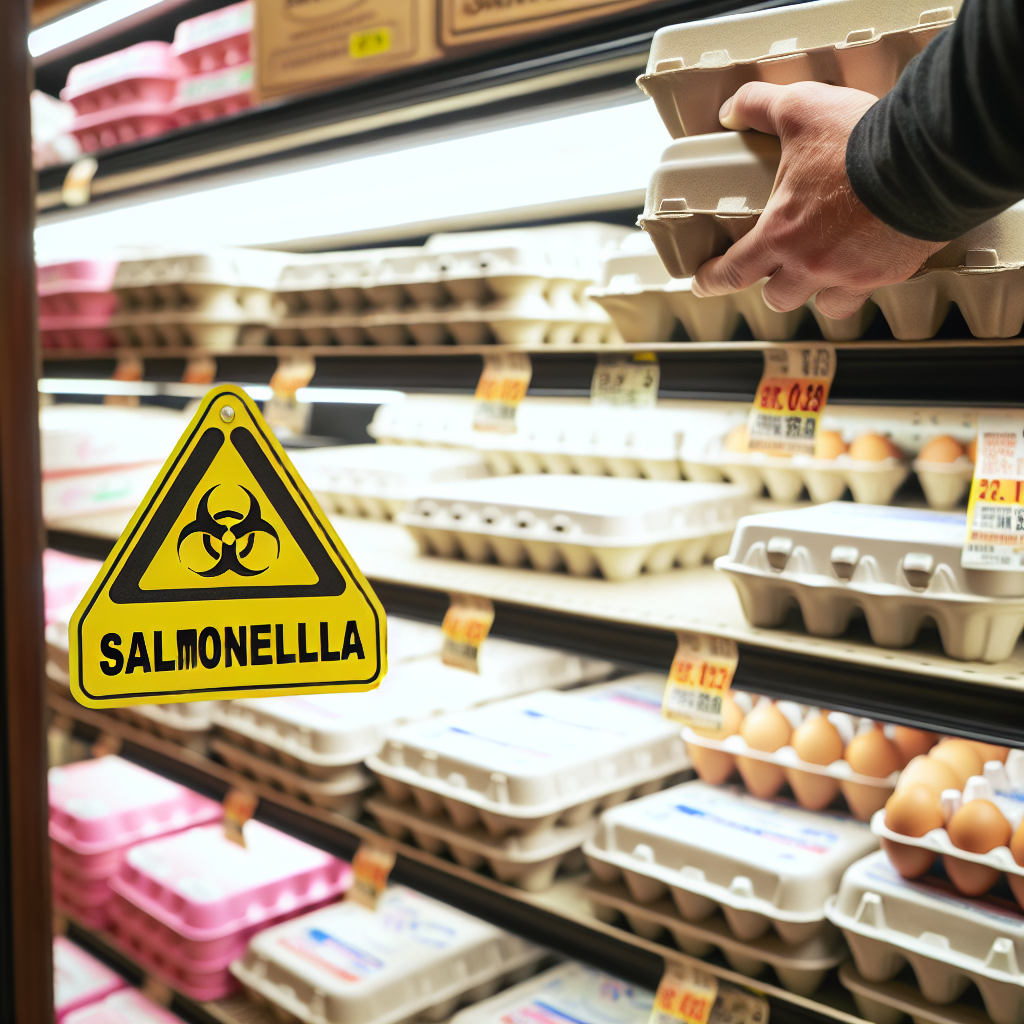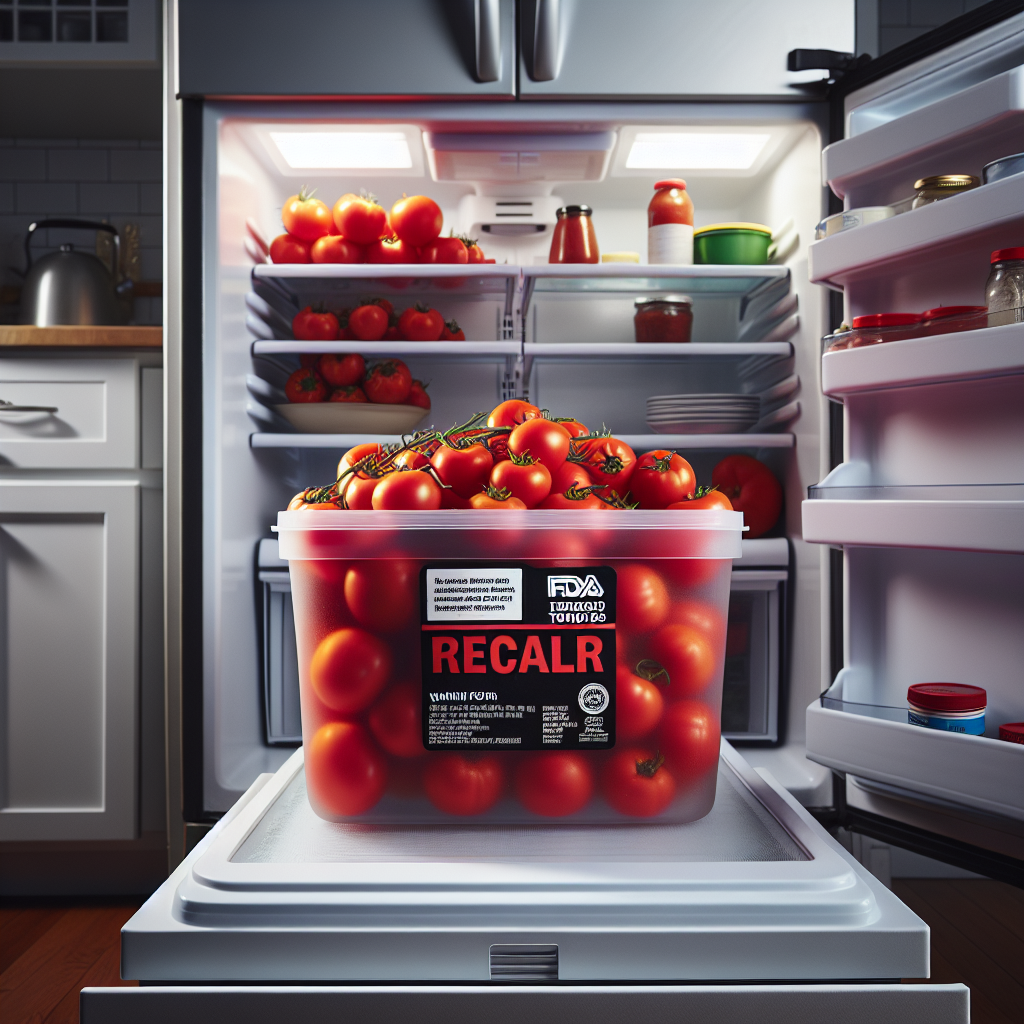Discover how nutrient highways in the body impact cancer and chronic disease prevention. Learn why food origins matter for your health in this in-depth article.
He had a late-night snack after graduating from college. An allergic reaction killed him. – MSN
A college grad’s late-night snack turned tragic after a fatal allergic reaction. Learn how food allergies can be life-threatening and how to stay safe.
How to Make Nutrition Labels: A Step-by-Step Guide for Food Makers
How to Make Nutrition Labels: A Step-by-Step Guide for Food Makers Creating a nutrition label can overwhelm beginners, especially when you have to direct through FDA regulations. Tools like nutrition label creators bring good news to food makers who struggle with this vital step. These tools can produce FDA-compliant nutrition facts panels in an hour or less. Retailers must have nutrition fact panels on their products if they exceed $50,000 in food sales and $500,000 in total sales. The FDA updates the Nutrition Labeling and Education Act regularly based on current dietary research. This makes compliance a moving target for food manufacturers. Simple understanding of nutrition facts labels helps consumers make informed choices about your products. These labels include serving information, calories, nutrients and Percent Daily Values (%DV). Let us show you how to create nutrition labels for your food products. We’ll explore free recipe nutrition calculators and share design best practices. Your labels will be both compliant and work well. Our piece covers everything you need – from making nutrition labels for homemade foods to commercial products. What Goes Into a Nutrition Label Image Source: FDA You need to understand everything in a nutrition label before creating one for your products. The FDA controls these labels so consumers get standardized details about their food purchases. Serving size and calories Every nutrition label starts with serving information. Serving sizes are standardized to help you compare similar foods easily. These sizes show what people usually eat—not what they should eat [1]. To name just one example, lasagna shows one cup as a serving, while ice cream usually lists ⅔ cup [2]. The first things to check are serving size and servings per container. You’ll need to multiply all nutritional values if you eat an entire package with multiple servings [3]. If you eat two cups of lasagna, you’re getting double the calories and nutrients listed for one serving. Calories show up in large, bold font to catch your eye quickly [4]. This helps you spot calorie information right away. While 2,000 calories per day serves as a basic guide, your needs change based on your age, sex, height, weight, and how active you are [1]. Macronutrients and %DV The nutrition facts label must show these key macronutrients [1]: Total fat (including saturated fat and trans fat) Cholesterol Sodium Total carbohydrates (including dietary fiber, total sugars, and added sugars) Protein Each nutrient shows its amount in grams or milligrams, and most display a Percent Daily Value (%DV). This percentage tells you what one serving adds to your daily diet [1]. The %DV makes nutrient information easy to understand without any math. Here’s a simple rule: 5% DV or less means it’s low, while 20% DV or more means it’s high [1]. Your best bet is to pick foods with more dietary fiber, vitamin D, calcium, iron, and potassium, but less saturated fat, sodium, and added sugars [4]. Some nutrients like trans fat and total sugars don’t show a %DV on the label [1]. The Daily Values now match current nutrition science, with new reference values that include 50g for added sugars and 28g for dietary fiber [5]. Vitamins, minerals, and allergens Labels must list vitamin D, calcium, iron, and potassium [2]. These nutrients appear because many Americans don’t get enough of them [4]. Food makers can add other vitamins and minerals if they want, especially when they add them to food or make health claims [5]. Beyond nutrition info, labels must show major food allergens. Nine major food allergens cause most severe allergic reactions: milk, eggs, fish, crustacean shellfish, tree nuts, wheat, peanuts, soybeans, and sesame [6]. You’ll find allergens clearly marked in parentheses after the ingredient or in a separate “Contains” statement [6]. Food Scan Genius app takes an AI-first approach with 35 unique filters that help spot potential allergens while shopping. Unlike Yuka and OpenFoodFacts, it gives you customized details based on your dietary needs, making it much easier to understand nutrition labels when you’re shopping. Creating accurate nutrition labels needs careful attention to these components. Your products’ nutrition labels must have all required elements with accurate calculations to help consumers make informed choices and keep your business following FDA rules. How to Create a Nutrition Label from a Recipe Creating nutrition labels from your recipes is easier than you think. The right tools can help you make professional nutrition facts panels without any special training or expensive lab tests. Use a recipe nutrition calculator free tool You can create nutrition labels from your recipes with several free online tools. These calculators connect to food databases and give you accurate nutritional information: MyFoodData has a complete recipe nutrition calculator to build and edit recipes quickly [7]. You’ll see nutritional results right away as you add ingredients. RecipeCard.io lets you paste your ingredient list and get a nutritional breakdown that matches USDA guidelines [8]. HappyForks shows detailed nutrition facts once you copy and paste ingredients from any website [9]. VeryWell has an accessible interface where you paste ingredients, adjust servings, and get a complete nutrition label in seconds [10]. Food Scan Genius goes beyond this with its AI-first approach. The app differs from Yuka and OpenFoodFacts by offering 35 unique filters. These filters help spot potential allergens and create customized nutrition information based on your dietary needs. Input ingredients and quantities The next step after picking your tool is to enter your recipe details: Search for ingredients in the database using full or partial names [7]. Select the closest match from what you find [7]. Specify quantities with whole numbers, decimals, or fractions (e.g., 2 apples, 1/2 cup flour) [7]. Choose appropriate serving sizes from dropdown menus or make custom ones [7]. The best results come from including every ingredient—even tiny amounts of seasonings and additives [11]. Tools like LabelCalc let you save common combinations as “preps” to use in future recipes [5]. This saves time when you work with similar ingredients. Recipe calculators also show how each ingredient affects
Food Sensitivity Tests at home made easy
Are Food Sensitivities Affecting Your Daily Life? Discover Clarity with Our Advanced Testing Solution Struggling with unexplained symptoms? Your body might be sending signals about food sensitivities. Are you experiencing bloating, headaches, or fatigue after meals? Confused about which foods might be causing your discomfort? Our comprehensive Food Sensitivity Test provides answers by examining your body’s unique reactions to over 200 common foods and ingredients. How Our Food Sensitivity Test Works Simple, Accurate, and Convenient Testing in 3 Easy Steps: Collect your sample at home – Our kit includes everything you need for a simple finger-prick sample collection that takes less than 5 minutes Mail your sample – Use our prepaid shipping envelope to send your sample to our CLIA-certified laboratory Receive detailed results – Within 5-7 days, access your personalized digital report identifying your specific food sensitivities Did you know that food sensitivities affect up to 20% of the population but often go undiagnosed for years? Unlike immediate allergic reactions, sensitivities can cause delayed symptoms that are difficult to connect to specific foods. What Foods Are Tested? Our comprehensive panel examines your body’s reaction to over 200 common foods across categories including: Dairy products (milk, cheese, yogurt) Grains (wheat, corn, rice) Fruits & vegetables Nuts & seeds Meats & seafood Herbs & spices Food additives & preservatives Why Choose Our Food Sensitivity Test? Are you tired of guessing which foods might be causing your symptoms? Our test offers: Clinical-grade accuracy – The same IgG antibody testing technology used by healthcare professionals Comprehensive testing – Over 200 foods and ingredients analyzed in a single test Clear, actionable results – Color-coded severity ratings and personalized elimination plan Healthcare provider support – Optional consultation with our nutrition specialists to interpret results CLIA-certified laboratory – All testing performed in our accredited clinical laboratory Understanding Your Results Your detailed digital report categorizes foods by reaction level: High Reactivity – Foods causing significant sensitivity responses Moderate Reactivity – Foods with measurable but less severe reactions Mild Reactivity – Foods with minimal reaction No Reactivity – Foods showing no sensitivity response Transform Your Health Journey Today Struggling with unexplained digestive issues, skin problems, or fatigue? Food sensitivities might be the missing piece of your health puzzle. Our Food Sensitivity Test provides the clarity you need to make informed dietary choices. Special Offer: Use code CLARITY25 for 25% off your first test kit [ORDER YOUR TEST KIT NOW] Frequently Asked Questions How is this different from an allergy test? Food allergies trigger immediate immune responses (IgE antibodies), while food sensitivities involve delayed reactions (IgG antibodies) that can appear hours or days after consumption. Our test specifically measures IgG antibody responses. How accurate is the test? Our Food Sensitivity Test uses clinical-grade immunoassay technology with 95% reproducibility in laboratory studies. All testing is performed in our CLIA-certified laboratory under strict quality control measures. What happens after I identify my food sensitivities? Your results include a personalized elimination protocol to temporarily remove reactive foods, then systematically reintroduce them to identify your specific triggers. This process helps pinpoint which sensitivities are most significant for your symptoms. Is this test right for me? Are you experiencing unexplained symptoms like bloating, headaches, skin issues, or fatigue? Have traditional medical approaches failed to identify the cause? Our Food Sensitivity Test is designed for anyone seeking to understand potential food-related triggers for persistent health issues. Join Thousands Who Have Found Relief After years of unexplained digestive issues, my Food Sensitivity Test revealed several surprising triggers. Following the elimination protocol has completely transformed my digestive health!” – Sarah M. I was skeptical at first, but identifying my food sensitivities has eliminated my chronic headaches. The test was easy to use and the results were clear and actionable.” – Michael T. [ORDER YOUR TEST KIT NOW] This test is not intended to diagnose, treat, cure or prevent any disease. Always consult with a healthcare professional about your results.
Egg recall over salmonella warning spans across nine states – MSN
Urgent egg recall alert! Salmonella concerns trigger recall across nine states. Check if your eggs are affected and stay safe. Details inside.
California-based company recalls nearly 2M cartons of eggs because of potential salmonella threat – MSN
Nearly 2 million egg cartons recalled in California over salmonella concerns. Stay informed on food safety and protect your family with the latest updates.
A deadly agent in your fridge, FDA warns recalled tomatoes in Carolinas and Georgia pose risk of death – MSN
FDA warns recalled tomatoes in Carolinas and Georgia may be deadly. Check your fridge now to avoid serious health risks. Stay safe with this urgent update.
Doctor issues warning over spicy food after influencer dies of stomach cancer – MSN
Doctor warns about risks of spicy food after influencer dies of stomach cancer, urging awareness and caution when consuming hot peppers and spicy meals.
Salmonella outbreak: Cucumber products sold at Walmart, Kroger stores recalled – MSN
Urgent recall: Salmonella outbreak linked to cucumbers sold at Walmart and Kroger. Check your produce and stay safe. Read the latest update now.
Are parents adapting to new allergy prevention advice for infants? – News-Medical
Are parents keeping up with the latest infant allergy prevention advice? Discover new research on parental adaptation and expert recommendations.














